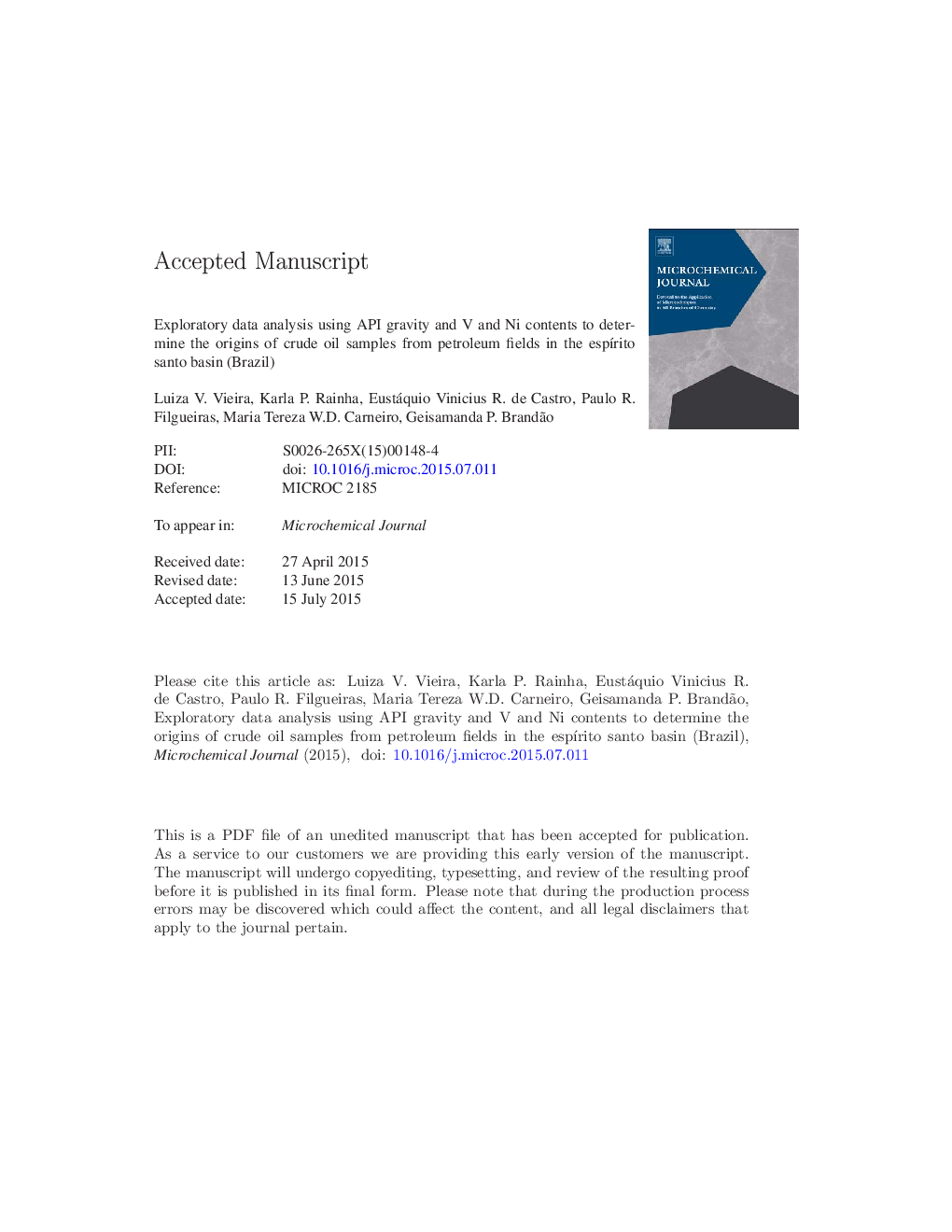| Article ID | Journal | Published Year | Pages | File Type |
|---|---|---|---|---|
| 7641883 | Microchemical Journal | 2016 | 26 Pages |
Abstract
In this paper, the Ni and V contents in 64 crude oil samples (API gravity between 10 and 40) from four oil fields in the EspÃrito Santo sedimentary basin, located on the southeastern Brazilian coast, were quantified using atomic absorption spectrometry. The results were used in an exploratory analysis in which principal component analysis (PCA) and linear discriminant analysis (LDA) were applied to differentiate the crude oil samples. A PCA model with two components (PCs) explained 96.8% of the total variance. The weights from the PCA indicated that the V/Ni ratio allows for proper separation of crude oils with marine origins from those with lacustrine origins. In addition, the Ni and V contents and the API gravity are the principal variables that allow for the separation of samples from different fields. PCA was shown to be a useful tool for the identification of sample patterns in relation to the origin of the crude oil, indicating that the technique could be an important area for petroleum exploration studies. The sample groups categorized based on PCA scores were confirmed using the supervised LDA classification method.
Keywords
Related Topics
Physical Sciences and Engineering
Chemistry
Analytical Chemistry
Authors
Luiza V. Vieira, Karla P. Rainha, Eustáquio Vinicius R. de Castro, Paulo R. Filgueiras, Maria Tereza W.D. Carneiro, Geisamanda P. Brandão,
